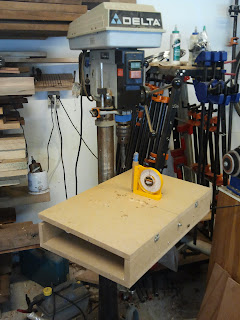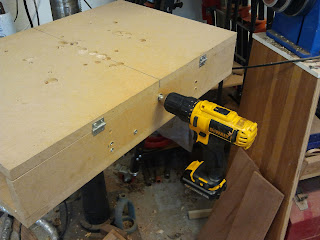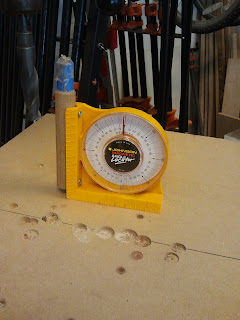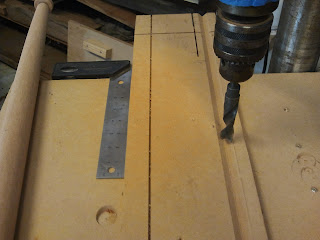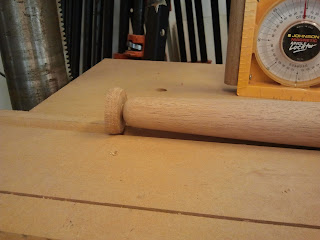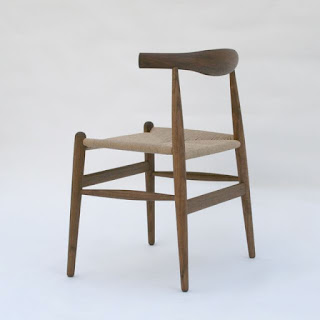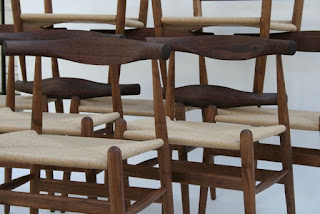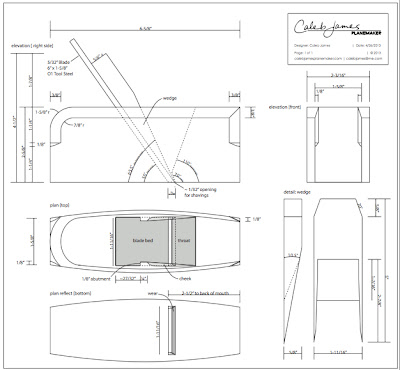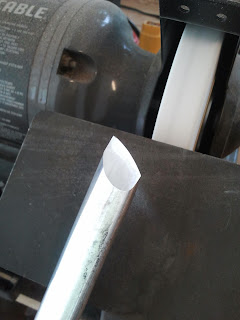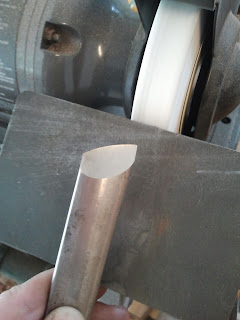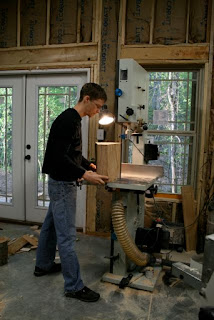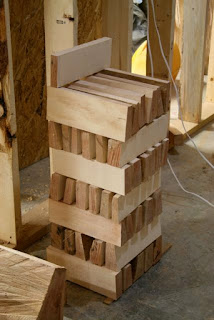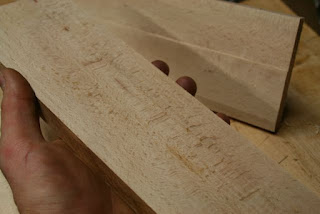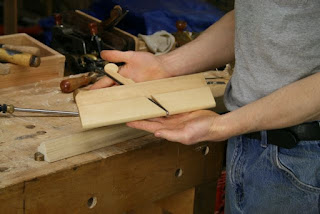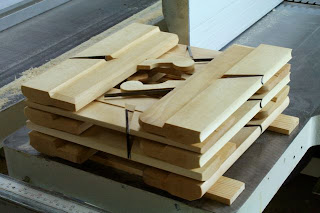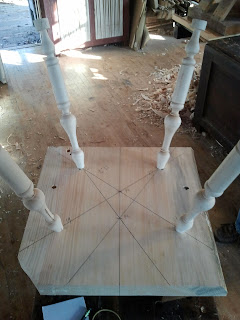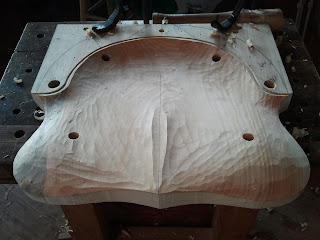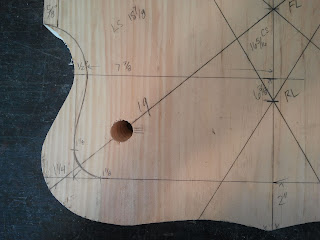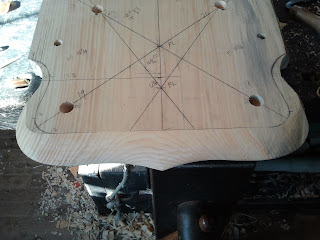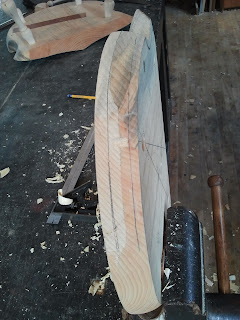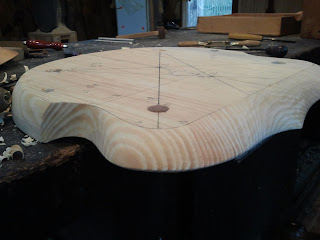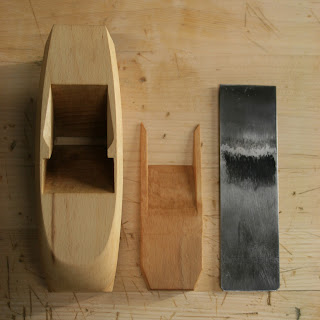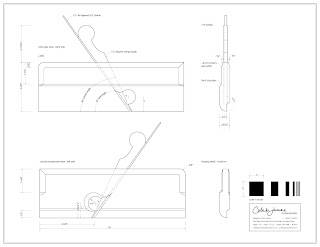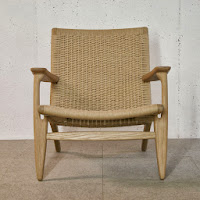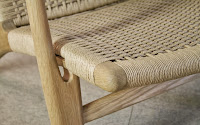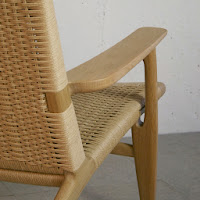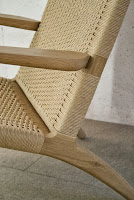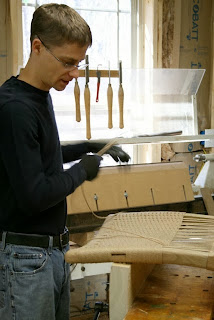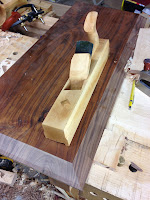Yet more on drilling... Lets look at how I approach drilling for a Danish Modern chair frame. Naturally the tooling that was in vogue during the time a chair was designed and produced will often suit the production of that style the easiest even if other means are developed later on. I find that especially true of windsor pieces. That is why I will do almost all drilling free hand on those pieces but for the Danish Modern pieces most holes will be done on a drill press or even slot mortiser. I will cover the latter method in a future post, which is a must have tool for Wegner designs.
So lets look at my drill press set up. I use a jig that without would otherwise make drilling a post and rung chair a real fumbling awkward mess. I have seen a number of descriptions of ways to do this but none that don't require something that is specific to each chair design. This jig is just a platform that I can set a specific angle on. It will drill anything from 0º-25º.
Here is how it works. A round dowel is drawn forward or backwards by a treaded shaft. The dowel makes contact with an angled bracket pushing the platform up or lowering it.
I use an additional platform with a "V" groove to hold a round part stationary. Square it to the platform edge. Add a clamp to hold it still. (not shown)
So lets look at my drill press set up. I use a jig that without would otherwise make drilling a post and rung chair a real fumbling awkward mess. I have seen a number of descriptions of ways to do this but none that don't require something that is specific to each chair design. This jig is just a platform that I can set a specific angle on. It will drill anything from 0º-25º.
Here is how it works. A round dowel is drawn forward or backwards by a treaded shaft. The dowel makes contact with an angled bracket pushing the platform up or lowering it.
I use a cordless drill to drive the shaft, for the sake of speed.
Here are a few photos of a post beginning prepared to drill. The pictures are pretty self explanatory on the order of set up.
The angle is set by a simple gravity/plum bob type angle gage that you can purchase at any home improvement store. I compare the chuck or bit angle to the platform and just adjust the platform to the angle in relation to it.
Center it on the groove.
Drill!
For posts that are tapered, leave an end on your turning that is equal to the diameter of the largest portion of your turning. This will allow you to base your angle of the hole being drilled on the center line of the part rather than any angled taper.
I will almost always start by drilling the front and rear post and assemble a right half and a left half of a frame. Then follow by drilling the remaining holes on one of the assembled halves at a time then complete by mortising or drilling for the back rest/supports. Now assemble the two halves into a whole. Doing it this way makes the assembly more accurate than trying to drill all the holes and then assembling.
This is the simplest most versatile method I have come to use so far. I will follow up with some discussion of how you can use this jig in connection with sighting angles to drill compound angles. This is really useful for drilling the holes in the back of an elbow chair or something similar.
